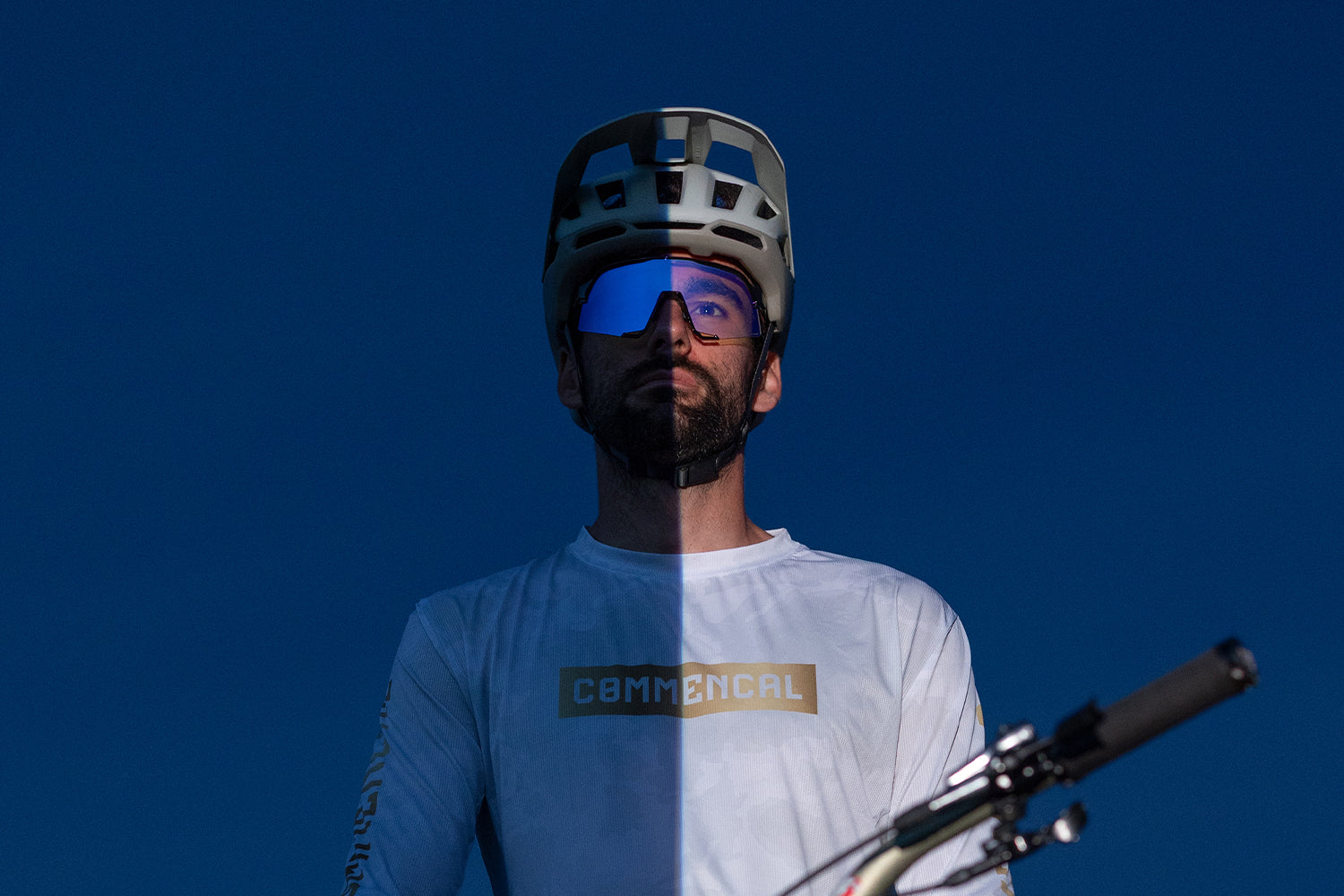This scenario will be very familiar to you – you're out on the slopes, in the zone, and all of a sudden your goggles start to fog and you can’t see. If you don’t understand what causes goggle fog, you can’t prevent it – and it’s one of the most frustrating experiences you can have when doing winter sports.
Fortunately there are a number of things you can do to make sure your goggles won’t fog up, and in this article, we give you a comprehensive overview of the best way to take care of your snow goggles to prevent fog.
Why do goggles fog up?
Simply, snow goggles fog up due to condensation – the same condensation that leads to a mist on your windows on a cold morning. Snow goggles fog because of the condensation of moisture on the lens, as a result of warm, humid air on your face meeting the cold surface of the goggle lens. The moisture from your face cools down into tiny water droplets, which form a mist on the lens which prevents you from seeing properly.
Goggle fogging is a particular issue in winter sports due to the significantly colder temperatures. Your body temperature is increased by skiing or snowboarding which makes for a vast difference between the temperature inside and outside your goggles – much more so than summer sports such as baseball, motocross and cycling.
Most goggles are designed with good ventilation which can allow the warm, moist air to escape before it can condense on the lens. However, if your goggles don’t fit properly, or the seal is damaged in some way, this can help to trap the air and help to form fog.
Below, we go into the best ways to prevent your snow goggles from fogging and ensure a safer and more enjoyable experience on the slopes.
5 tips to prevent snow goggles from fogging
1. Proper ventilation
We’ve already spoken about how ventilation can help prevent fog forming, but in a nutshell, proper ventilation helps the moist air escape from inside your glasses before it has the chance to form fog. Well designed goggles with good ventilation mitigate fogging issues – many glasses also feature adjustable ventilation which helps you manage the airflow based on your activity level and weather conditions.
If you feel your goggles aren’t ventilating properly, check to see if the vents are clear of ice and snow and aren’t blocked by your helmet or ski mask. Poorly-fitting goggles can also cause ventilation problems, so make sure your goggles fit properly and the seal is good and intact.
2. Anti-fog products
Anti-fog products can be a great addition to your winter sports gear. They work by minimizing surface tension, which allows water molecules to spread evenly across the lens instead of forming droplets that lead to fog. While they don’t replace the need for proper fitting or adequate ventilation, they can be a useful tool if you’ve followed all the other steps in this article and still have issues with fog.
Anti-fog products come in sprays, wipes or gels to be applied directly to the interior of the lens. Their effectiveness varies by product, environmental conditions and your activity level, but if you use them correctly they can help reduce the likelihood of fogging quite significantly.
3. Proper goggle fitting
If your goggles don’t fit properly, or the seal is broken or damaged, your glasses may let in cold air which can mix with the already warm air inside the goggles and cause fogging. This may seem counterintuitive – as ventilation also lets in cold air and this helps to prevent fogging. Ventilation doesn’t just let in cold air – it improves airflow through the goggles and allows the cold air to enter and leave your goggles in a controlled way. Improper fitting allows the air to enter your goggles in an uncontrolled way, doesn’t allow for adequate airflow which means the cold air mixes with the warm air in your goggles, condenses and fogs up your lenses.
Proper goggle fitting and design will allow a managed flow of cold air into your goggles while directing warm, moist air out through the vents, reducing fogging. If your goggles don’t fit properly and you are having issues with fog – buy a new pair that fit.
4. Keep goggles dry and clean
Keeping goggles dry and clean prevents fogging as it removes moisture and oils that can attract and hold more moisture on the lens surface. A clear lens makes sure that any anti-fog treatments, whether applied by your or applied at the factory, are effective and are not covered by dirt and fingerprints.
Additionally if you don’t properly dry your goggles this can help to trap moisture inside, making fogging worse than it otherwise would be. Regular cleaning and drying can help maintain the anti-fog coating on the lens, making sure your goggles perform adequately when you’re out on the slopes.
5. Wear a ski mask
A ski mask can be a huge help in preventing fogging by managing the flow of warm, moist air that your body produces. It can help to trap this air before it enters your goggles and reducing the chance of condensation. Additionally it can also provide an extra layer of insulation, helping to keep the temperature inside your goggles more consistent and further reducing the temperature differential that leads to fogging.
Wearing a ski mask is not as high-tech as some of the other suggestions on this list but it’s a really simple and effective way of enhancing the performance of your goggles and assisting the anti-fog coating and ventilation features.
Choosing the right snow goggles - double vs single lens
Where possible you should go for double-lens goggles as these are generally better at preventing fogging. Double-lens goggles create an insulating air layer between the two lenses, minimizing the condensation that occurs when the warm air inside meets the cold surface. This is exactly the same concept as double-glazed windows in your home – the inner lens is kept at a closer temperature to your face, reducing the temperature differential that leads to fogging.
However – single-lens goggles are generally lighter weight and usually provide clearer vision without any optical distortion that you can sometimes get from double-lens goggles. They’re also generally cheaper – and a pair of well-designed single-lens goggles can be very effective on the slopes, so make sure you try both out to see what works for you.
Proper usage and care
Of course, there are also things you can do to properly take care and use your goggles to prevent excessive fogging – below are just a few of the most important and effective steps to take.
Avoid overheating
Managing your body heat is very important when it comes to preventing goggle fog. Layer your clothing so you can adjust to changing temperatures and activity levels. Vents on helmets and jackets can also help to regulate your temperature. Overheating increases sweating, leading to more humidity around your face, which can fog up your goggles.
Maintain your goggles properly
Regular maintenance of your goggles is crucial to ensure they perform at their best for as long as possible. Use a soft, microfibre cloth to clean the lens – this will help avoid scratches and damage. For deeper cleans, you should read the instructions that came with the goggles as to which products you can use to avoid damaging the anti-fog coating. Store your goggles in a dry, ventilated place to ensure mold and mildew does not build up.
Avoid direct contact
Don’t touch the inside of your goggles with your fingers – there are natural oils on your skin which can leave residues, attracting moisture and compromising the anti-fog coating. Always handle your goggles by the frames – you should also learn to adjust them without touching the lenses. If you do need to make adjustments, ensure your hands are clean and dry.
Properly deal with wet goggles
From time to time your goggles will become wet – either due to melting snow or due to your own sweat. Gently dab the moisture away with a soft cloth. Don’t be tempted to rub the inside of the lens (especially not with your fingers) as this can wear away the anti-fog coating and increase the likelihood your goggles will fog up. Allow your goggles to air-dry in a ventilated space – don't use heat such as from a hairdryer or a heater, as this can warp the lenses and damage the frame.
Frequently asked questions about preventing snow goggles from fogging
Is it possible to restore the anti-fog coating if it wears off?
It's possible to restore anti-fog properties to your glasses if the factory-applied coating has worn off, but sometimes is quite difficult. There are, however, ways to improve fog resistance if the coating has worn off. You can apply anti-fog sprays or wipes designed especially for snow goggles. These products create a temporary anti-fog layer on the lens. Make sure you follow the manufacturer’s instructions to avoid damaging the lens.
How can I deal with fogging if I wear glasses under my goggles?
If you wear glasses under your goggles, you should take care to choose an over-the-glasses (OTG) design with ample room and ventilation. You should look for goggles with a double-lens system and anti-fog features on the lenses. Consider also using anti-fog products on your glasses, and make sure your helmet and goggles allow for proper airflow to reduce buildup of moisture. You may also want to look into prescription inserts or even contact lenses as an alternative to wearing glasses under your goggles, as this is likely to help you significantly reduce fogging as compared to wearing glasses under your goggles.
Why do my goggles fog up more on certain days?
Goggle fogging can be much worse on days with high humidity, or days with vast temperature differences between the air outside and inside the goggles. When your body heat increases from physical activity, it creates moisture. If your goggles aren’t well ventilated, or if the seal between the goggles and your face traps warm air, the temperature and moisture differences can cause fogging.





